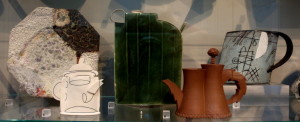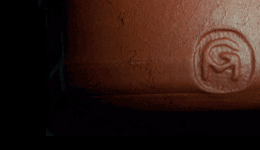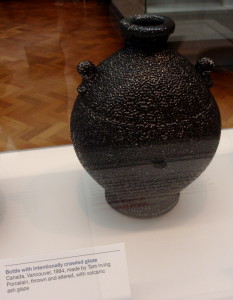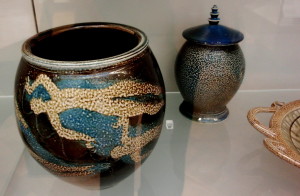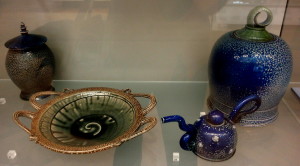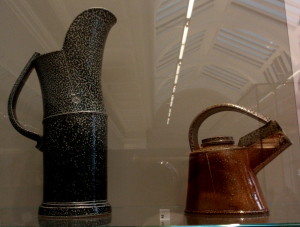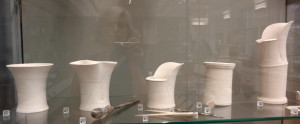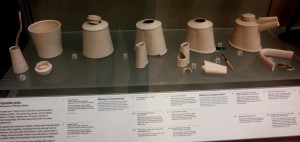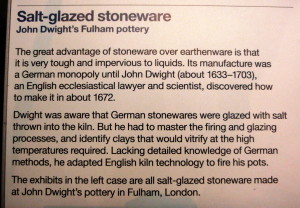For several years the huge ceramics collection at London’s Victoria & Albert Museum was not available to the public. I remember a huge, block-long series of rooms each featuring Korean, Italian, English collections – any ceramic tradition you can imagine. At last these galleries are reopened and the display has been entirely reorganized. The museum is free and not-to-be-missed!
A month ago I was happy to find myself alone in London for an afternoon. I lived there for 5 years, off and on, in the sixties and I still smile as I take the tube and pretend to be a 20-year-old art student. My first stop after Waterloo was Tottenham Court Road tube station. A short walk north to Percy Street got me to Contemporary Applied Arts. There I found a good selection of fine ceramics as well as glass, wood and other media on display. Ruthanne Tudball’s work was nicely displayed in a group. One whole wall was used for a fund-raising show of plates all made and decorated by well-known clay artists. Sadly photography is not allowed.
A speedy tube ride to South Kensington, and a short underground walk got me to the V & A Museum. The gift shop there is an amazing collection of carefully chosen Arts, Crafts and Design gifts, but I headed straight to the top floor and marvelled at the ceramics. Photography is OK there so although most photographs are through glass I have reminders of my favourite pots and traditions. There is an extensive collection of British pottery from Medieval, slipware, stoneware, factory production and then 20th Century studio work. Beyond that are galleries devoted to all the other types of ceramics and other areas of the world. Days, you need!
A vast rotunda features commissioned contemporary work, mainly very large, non-functional pieces. Edmund de Waal’s ‘Signs and Wonders 2009’, a group of elegant, celadon-glazed porcelain pots are easy to miss, sitting as they do on a high circular shelf at the base of the dome ceiling.
There follows a very informative gallery where different techniques are explained with examples from around the world. My first photo below shows a group of work by familiar clay artists: John Chalke, Nicholas Homoky, Philip Cornelius, Richard Notkin and John Maltby. The next was a nice surprise, a bottle by our own Tam Irving with an intentionally crawled volcanic ash glaze from 1994. Next is one of a series of photos of my current passion, salt glazing. Mick Casson’s ‘Swimmers Jar’ 1990 is a marvellous example of resisting slip with a stencil. On the same shelf are pots by other British salt glazers, Walter Keeler, Peter Meanley and Jane Hamlyn.
I am also including photos of two pots by Wally Keeler with adjacent display of how he assembles them. And the final photo for today describes how salt glazing came to Britain. More photos tomorrow..